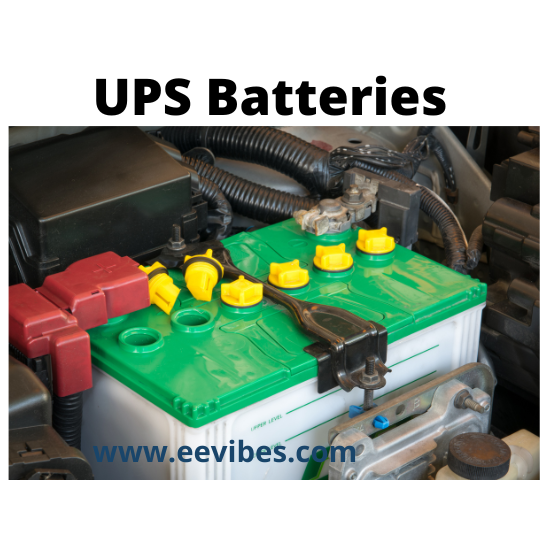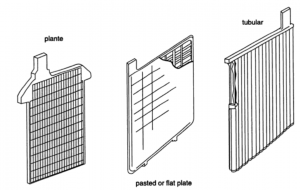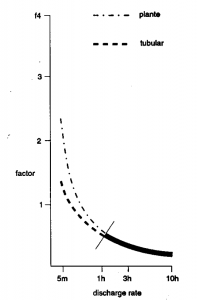
Battery Options for UPS
Discuss the Different Types of Batteries Available for UPS . In this article I will discuss about the different batteries options available for UPS. These are:
- Lead or Alkaline
- Lead-Acid batteries
Lead or Alkaline
The first option that we have to select is to decide which battery to be used, either an alkaline battery of nickel-cadmium type or an alkaline battery. Although the nickel-cadmium battery can perform good in UPS, its high cost due to its expensive material makes it unattractive option for the customers. Because of this reason, nickel-cadmium batteries are not so much used in UPS systems. Since the market is so competitive, you will see mostly UPS use lead-acid batteries.
Lead-Acid Batteries
There are three generic types of construction of lead-acid batteries. The type of the positive plate used by the cell is reflected by each type and it helps to determine the electrical characteristics of the product. These three types of lead-acid batteries are:
- Plante Cell
- Pasted Plate Cell
- Tubular Cell
These three types are depicted in the figure below:

Criteria for Choosing Batteries for UPS System
Here is the main factors that help to decide which battery should be used for UPS:
- Discharge Voltage Profile
- Internal Resistance
- Energy Density
- Service Life
- Battery Cost
All the above mentioned features except the service life are related to the electric discharge property of the cell. Service life is more linked to the electrochemistry of the cell.
For the UPS, we need batteries that can perform at higher discharge rates. Typical discharge rate is usually from 5 minutes to 30 minutes with the standby period of 15 minutes.
With this discharge rate there is a prominent difference in performance of three types of lead-acid cell mentioned above. Different discharge rate of these batteries with different cell is depicted in the figure below.

It can be observed that the characteristics of pasted plate cell lie between the Tubular and Plante cell. In this graph we have shown order of current as a function of 10h capacity at various discharge rates for two different cells. It can be seen clearly that at discharge rate of more than one hour, there is a small difference between two types. For the discharge rates less than an hour, the performance of plante cell’s become more attractive. It continues until at the discharge of 5 minutes. Palate discharges 2 to 3 times in 10 h capacity while Tubular only manages current equivalent to 1.5 times in 10h capacity.
Based on the above observations, we can conclude that the following order can be chosen while selecting battery for the UPS.
- Plante Plate
- Pasted Plate
- Tubular Plate
This selection criteria is completely based on the electric properties of the batteries and we have not made decision based on the cost and anticipated service life.
The cost comparison of lead acid cells is shown in the following table.
| Type | Plante | Tubular | Pasted Plate |
| Capacity (Ah) | 400 | 400 | 400 |
| Internal Cost | 100 | 80 | 75 |
| Life (years) | 20 | 14 | 12 |
| Annual Cost | 5 | 5.7 | 6.3 |
It can be observed from the above table that if we remunerate cost over expected life of the cell, then Plante will be in first order then Tubular and finally Pasted Plate. But practically, Pasted Plate is the most commonly used type for UPS battery. This is because of the fact that service life requirements in UPS battery hardly exceed ten years, and majority of the batteries have service life hardly around 5 years.
With these constraints repaying cost over its expected service life is not that important. and we choose the product with minimum cost.
Valve Regulated Lead-Acid Batteries
After identifying the Pasted palate to be the most optimum choice for the UPS batteries, it is necessary to make some assumptions about this most generic type by considering fairly the recently introduced valve regulated lead-acid batteries.
Also read here